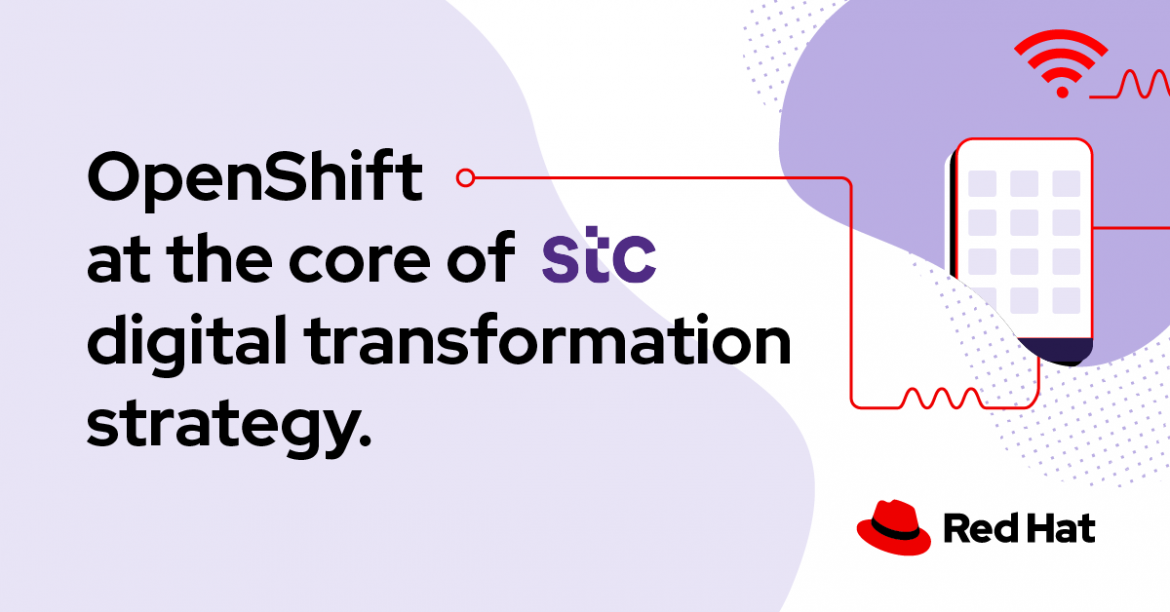In mid-2020, stc embarked on an ambitious project to pivot away from being a communications service provider (CSP) to become a comprehensive digital service provider (DSP).
Here we take a closer look at this project, the challenges they encountered, and how they leveraged Red Hat products and services towards achieving these transformative business objectives.

About stc
stc is the largest telecommunications operator in Saudi Arabia and in the Gulf Cooperation Council region (GCC) in terms of both subscriber base and revenue. Established in 1998, stc has been in operation for more than 20 years.
As the world of telecommunications has evolved, stc has also been evolving, spinning up a series of projects to launch and expand its offerings as a digital service provider.
At inception, stc took over the analog telephone and telegraph divisions of another organization, and has since expanded to offer modern mobile, landline, and television services, as well as a digital payments provider called stc pay.
stc and digital innovation
In June 2020, stc initiated a new strategy to become a world-class digital services leader providing new, innovative customer experiences built with cloud-native applications and microservices.
The goals of this strategy were to:
-
Reduce the time to market for applications focused on improving customer experience.
-
Shift from being a CSP to DSP by building a full-featured platform for hosting microservice applications.
-
Standardize its platform and management solutions to be more efficient and secure, while also reducing costs.
-
Introduce new digital services more quickly, creating new streams of revenue.
This initiative led to a number of different projects that went into production in February 2021, and further expanded in May 2021.
In addition to simplifying and modernizing its business support system (BSS), stc currently hosts four major applications, with plans to migrate up to 20 more in the near future. Beyond that, expansion targets include deploying multiple OpenShift clusters, each expected to host up to 300 applications.
Business and technical challenges
Many projects of this nature encounter a variety of roadblocks, and stc’s was no different, with a variety of business and technical challenges to overcome.
On the business side, stc identified the following as the top issues, which led it to working with Red Hat on this project:
-
Old legacy technology in the form of an inflexible, monolithic application
-
Inability to scale up and out due to a general need for agile systems
-
A need to introduce new digital services at scale
-
Non-standard and higher cost legacy systems
-
Maintaining the largest market share in Saudi Arabia
In addition, stc faced challenges related to feature maturity and a need to integrate with stc’s legacy tools.
stc and Red Hat
After evaluating a variety of options, stc selected Red Hat OpenShift as its platform of choice, basing its decision on a number of factors, including:
-
The robust nature of the Red Hat partner ecosystem
-
Red Hat’s commitment to putting security front and center
-
The large number of microservice applications that are certified and validated for the Red Hat OpenShift platform
-
An extensive array of top-of-the-line DevOps tools
As a result, stc now uses a number of Red Hat products as part of its new technology initiative, with plans to incorporate even more in the future.
As of this writing stc currently uses these Red Hat products:
-
Red Hat OpenShift Data Foundation
-
Red Hat Single Sign-On
-
Red Hat OpenShift Service Mesh
In the near future, stc says it plans to incorporate:
Additionally, stc engaged with a variety of Red Hat services and support teams during the development of this project, including:
The results
stc has been able to fundamentally modernize its technology, moving from a monolithic application to a collection of microservices. The company’s infrastructure is also significantly more flexible, giving it the agility it needs to meet growing demands while moving faster and reducing costs. The company also reports that security and compliance have been improved, reducing risks for both itself and its customers.
Through this new initiative, stc has created new revenue-generating streams, introduced new digital services, acquired new key subscribers, all while providing an improved user experience and increasing overall customer satisfaction.
Learn more
You can learn more about Red Hat products and services here:
关于作者
Deb Richardson joined Red Hat in 2021 and is a Senior Content Strategist, primarily working on the Red Hat Blog.
产品
工具
试用购买与出售
沟通
关于红帽
我们是世界领先的企业开源解决方案供应商,提供包括 Linux、云、容器和 Kubernetes。我们致力于提供经过安全强化的解决方案,从核心数据中心到网络边缘,让企业能够更轻松地跨平台和环境运营。

